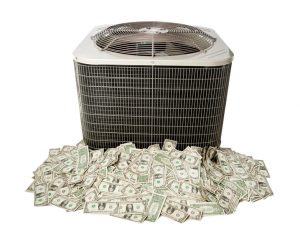 With the summer rushing up to meet us, many homeowners are in the spot where they realize they need a new air conditioning system to make it through the season. ACs aren’t eternal machines; they wear down after 10 to 15 years. You may be in this situation: you know you need that new air conditioner, or you may end up trapped with a busted one during the hottest day of the Ohio summer.
With the summer rushing up to meet us, many homeowners are in the spot where they realize they need a new air conditioning system to make it through the season. ACs aren’t eternal machines; they wear down after 10 to 15 years. You may be in this situation: you know you need that new air conditioner, or you may end up trapped with a busted one during the hottest day of the Ohio summer.
Is anything holding you back? It can be a big investment to have a new air conditioner installed, but this is a vital HVAC service in Cincinnati, OH that Bartels can make much easier. We’ll start by helping you understand a part of air conditioning that confuses many people, and that’s the efficiency ratings.
EER and SEER—The Two Ratings You Need to Know
An efficiency rating informs you how well an air conditioning system converts energy (electricity in this case) into cooling power (measured in the BTUs, British Thermal Units, removed from the air to cool it). The greater the efficiency rating, the less electricity the AC unit should ideally use to provide the cooling you’ll need. (We’ll get into the ideally part a bit later.)
When you’re looking at different air conditioning units, you’ll see two efficiency ratings on them, usually listed side by side: EER and SEER. EER stands for energy efficiency ratio and SEER stands for seasonal energy efficiency ratio. They sound almost identical, and that’s because they are almost identical—but that one letter difference is important.
EER is the ratio of cooling produced in BTUs to electricity consumed in watt-hours, as measured at a specific temperature and humidity. The higher EER, the more energy efficient the unit. SEER is the same ratio, except it is measured at a range of temperatures and humidity levels to gauge the performance of the unit over an entire season, rather than over a single test. EER is a snapshot of the air conditioner at work, while SEER is more like a full movie of the summer. EER is always lower than SEER, and in general SEER is the one you’ll probably pay the most attention to.
What Is a “Good” EER/SEER Rating?
Higher EER/SEER means higher efficiency, but it also means a more expensive purchase cost for the unit. What counts as a “good” EER/SEER therefore depends on your current situation. However, we recommend you only consider purchasing an air conditioning unit that meets current ENERGY STAR criteria for EER/SEER. To qualify for the ENERGY STAR label, an air conditioning system must have a minimum of 12.5 EER and 15 SEER. Special high-efficiency systems can have even higher ratings than this, with 20+ SEER.
You Need Professional Installation for These Ratings to Mean Anything
This is an important caution! The EER/SEER rating of an air conditioner is meaningless if the system is the wrong size for your home because it was poorly installed. The most efficient AC invented will still waste money if amateurs handled installing it. When you rely on our team, we’ll see you get the best out of your new AC investment.
Call on Bartels Heating & Cooling “For a More Comfortable Way of Life!” We can help you make sense of your new air conditioning installation.
